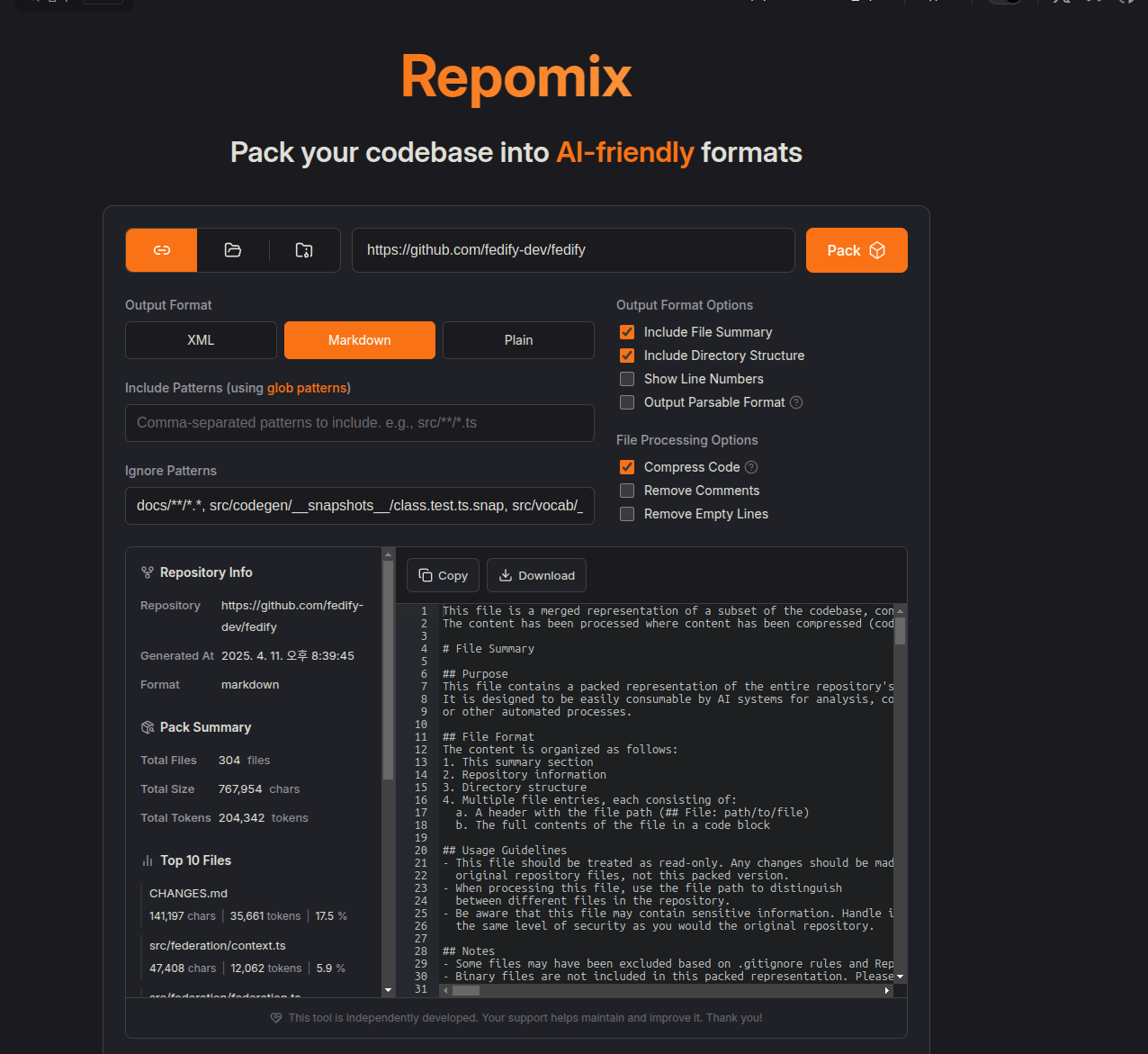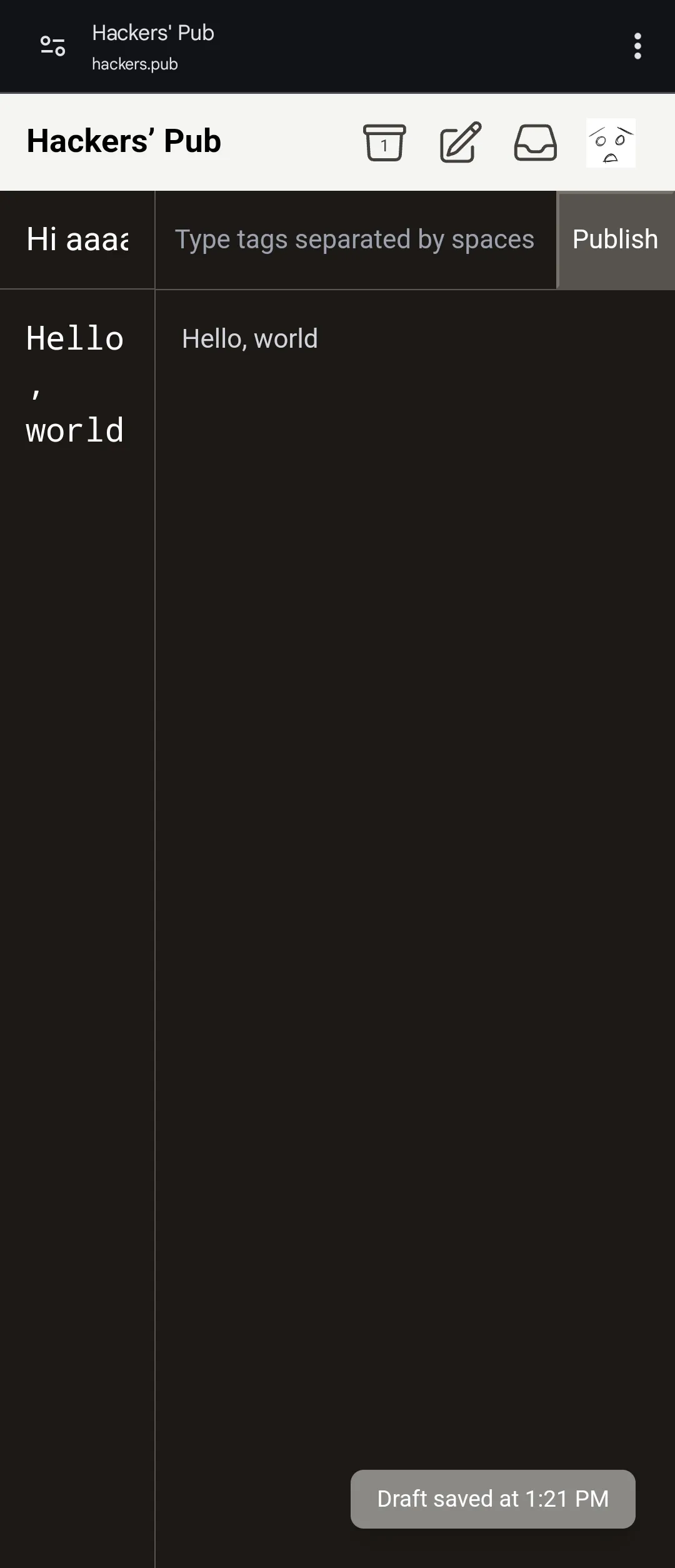e2e 암호화된 SQLite 호스팅/백업 서비스가 있으면 좋겠다. 동형암호를 활용하면 증분 싱크를 할수있지 않을까?
洪 民憙 (Hong Minhee)
@hongminhee@hackers.pub · 955 following · 669 followers
Hi, I'm who's behind Fedify, Hollo, BotKit, and this website, Hackers' Pub! My main account is at ![]() @hongminhee洪 民憙 (Hong Minhee)
@hongminhee洪 民憙 (Hong Minhee)  .
.
Fedify, Hollo, BotKit, 그리고 보고 계신 이 사이트 Hackers' Pub을 만들고 있습니다. 제 메인 계정은: ![]() @hongminhee洪 民憙 (Hong Minhee)
@hongminhee洪 民憙 (Hong Minhee)  .
.
Fedify、Hollo、BotKit、そしてこのサイト、Hackers' Pubを作っています。私のメインアカウントは「![]() @hongminhee洪 民憙 (Hong Minhee)
@hongminhee洪 民憙 (Hong Minhee)  」に。
」に。
Website
- hongminhee.org
GitHub
- @dahlia
Hollo
- @hongminhee@hollo.social
DEV
- @hongminhee
velog
- @hongminhee
Qiita
- @hongminhee
Zenn
- @hongminhee
Matrix
- @hongminhee:matrix.org
X
- @hongminhee
어떻게 하면 React 기반 앱을 좀 더 안전하고 탄탄하게 만들 수 있을까? 우리는 그 답을 ‘리액트를 리액트답게’ 작성하는 것이라고 정의했고, react-simplikit으로 그 답을 구체화했어요. https://github.com/toss/react-simplikit
![]() @hongminhee@hackers.pub洪 民憙 (Hong Minhee) 아 hollo가 에모지 리액션도 지원하는군요... 그냥 참새를 포기하고 hollo 호스팅 서비스를 만들어야하나... 근데 hollo 프론트엔드는 직접 구현하신건가요?
@hongminhee@hackers.pub洪 民憙 (Hong Minhee) 아 hollo가 에모지 리액션도 지원하는군요... 그냥 참새를 포기하고 hollo 호스팅 서비스를 만들어야하나... 근데 hollo 프론트엔드는 직접 구현하신건가요?
![]() @pbzweihander쯔방
@pbzweihander쯔방 

 Hollo도 프런트엔드 만드는 게 힘들어서 Mastodon 호환 API를 구현했어요… 저는 Phanpy랑 함께 쓰고 있습니다. 😅
Hollo도 프런트엔드 만드는 게 힘들어서 Mastodon 호환 API를 구현했어요… 저는 Phanpy랑 함께 쓰고 있습니다. 😅
![]() @noahimesaka1873@toot.funami.techNoa Himesaka
@noahimesaka1873@toot.funami.techNoa Himesaka  MFM을 포기하고 에모지 리액션만 가져가면 준표준 마스토돈 API 구현이 쉬울까요..? 이 준표준 API 구현하는 프론트엔드 구현체가 이것저것 있나요?
MFM을 포기하고 에모지 리액션만 가져가면 준표준 마스토돈 API 구현이 쉬울까요..? 이 준표준 API 구현하는 프론트엔드 구현체가 이것저것 있나요?
![]() @pbzweihander쯔방
@pbzweihander쯔방 


![]() @noahimesaka1873Noa Himesaka
@noahimesaka1873Noa Himesaka  Hollo도 Mastodon 호환 API랑 에모지 리액션, Markdown을 지원하고 있습니다. 충분히 가능하다고 생각해요.
Hollo도 Mastodon 호환 API랑 에모지 리액션, Markdown을 지원하고 있습니다. 충분히 가능하다고 생각해요.
Haskell용 tree-sitter 파서가 있는데, 이때 infix 등 연산자 우선순위를 동적으로 주는 기능들은 어떻게 처리하는거지? tree-sitter의 인터페이스가 context sensitive parsing이 될거같지가 않은데?
![]() @bglbgl gwyng 그냥 무시하고 기본 우선 순위대로 파싱하지 않을까 싶네요… 🤔
@bglbgl gwyng 그냥 무시하고 기본 우선 순위대로 파싱하지 않을까 싶네요… 🤔
Haskell용 tree-sitter 파서가 있는데, 이때 infix 등 연산자 우선순위를 동적으로 주는 기능들은 어떻게 처리하는거지? tree-sitter의 인터페이스가 context sensitive parsing이 될거같지가 않은데?
어째서 ActivityPub을 바닥부터 구현하는 것보다 Fedify를 쓰는 게 여러모로 나은지에 대한 글(영어)을 썼습니다.
Ditch the DIY Drama: Why Use Fedify Instead of Building ActivityPub from Scratch?
洪 民憙 (Hong Minhee) @hongminhee@hackers.pub
So, you're captivated by the fediverse—the decentralized social web powered by protocols like ActivityPub. Maybe you're dreaming of building the next great federated app, a unique space connected to Mastodon, Lemmy, Pixelfed, and more. The temptation to dive deep and implement ActivityPub yourself, from the ground up, is strong. Total control, right? Understanding every byte? Sounds cool!
But hold on a sec. Before you embark on that epic quest, let's talk reality. Implementing ActivityPub correctly isn't just one task; it's like juggling several complex standards while riding a unicycle… blindfolded. It’s hard.
That's where Fedify comes in. It's a TypeScript framework designed to handle the gnarliest parts of ActivityPub development, letting you focus on what makes your app special, not reinventing the federation wheel.
This post will break down the common headaches of DIY ActivityPub implementation and show how Fedify acts as the super-powered pain reliever, starting with the very foundation of how data is represented.
Challenge #1: Data Modeling—Speaking ActivityStreams & JSON-LD Fluently
At its core, ActivityPub relies on the ActivityStreams 2.0 vocabulary to describe actions and objects, and it uses JSON-LD as the syntax to encode this vocabulary. While powerful, this combination introduces significant complexity right from the start.
First, understanding and correctly using the vast ActivityStreams vocabulary itself is a hurdle. You need to model everything—posts (Note, Article), profiles (Person, Organization), actions (Create, Follow, Like, Announce)—using the precise terms and properties defined in the specification. Manual JSON construction is tedious and prone to errors.
Second, JSON-LD, the encoding layer, has specific rules that make direct JSON manipulation surprisingly tricky:
- Missing vs. Empty Array: In JSON-LD, a property being absent is often semantically identical to it being present with an empty array. Your application logic needs to treat these cases equally when checking for values. For example, these two
Noteobjects mean the same thing regarding thenameproperty:// No name property { "@context": "https://www.w3.org/ns/activitystreams", "type": "Note", "content": "…" }// Equivalent to: { "@context": "https://www.w3.org/ns/activitystreams", "type": "Note", "name": [], "content": "…" } - Single Value vs. Array: Similarly, a property holding a single value directly is often equivalent to it holding a single-element array containing that value. Your code must anticipate both representations for the same meaning, like for the
contentproperty here:// Single value { "@context": "https://www.w3.org/ns/activitystreams", "type": "Note", "content": "Hello" }// Equivalent to: { "@context": "https://www.w3.org/ns/activitystreams", "type": "Note", "content": ["Hello"] } - Object Reference vs. Embedded Object: Properties can contain either the full JSON-LD object embedded directly or just a URI string referencing that object. Your application needs to be prepared to fetch the object's data if only a URI is given (a process called dereferencing). These two
Announceactivities are semantically equivalent (assuming the URIs resolve correctly):{ "@context": "https://www.w3.org/ns/activitystreams", "type": "Announce", // Embedded objects: "actor": { "type": "Person", "id": "http://sally.example.org/", "name": "Sally" }, "object": { "type": "Arrive", "id": "https://sally.example.com/arrive", /* ... */ } }// Equivalent to: { "@context": "https://www.w3.org/ns/activitystreams", "type": "Announce", // URI references: "actor": "http://sally.example.org/", "object": "https://sally.example.com/arrive" }
Attempting to manually handle all these vocabulary rules and JSON-LD variations consistently across your application inevitably leads to verbose, complex, and fragile code, ripe for subtle bugs that break federation.
Fedify tackles this entire data modeling challenge with its comprehensive, type-safe Activity Vocabulary API. It provides TypeScript classes for ActivityStreams types and common extensions, giving you autocompletion and compile-time safety. Crucially, these classes internally manage all the tricky JSON-LD nuances. Fedify's property accessors present a consistent interface—non-functional properties (like tags) always return arrays, functional properties (like content) always return single values or null. It handles object references versus embedded objects seamlessly through dereferencing accessors (like activity.getActor()) which automatically fetch remote objects via URI when needed—a feature known as property hydration. With Fedify, you work with a clean, predictable TypeScript API, letting the framework handle the messy details of AS vocabulary and JSON-LD encoding.
Challenge #2: Discovery & Identity—Finding Your Actors
Once you can model data, you need to make your actors discoverable. This primarily involves the WebFinger protocol (RFC 7033). You'd need to build a server endpoint at /.well-known/webfinger capable of parsing resource queries (like acct: URIs), validating the requested domain against your server, and responding with a precisely formatted JSON Resource Descriptor (JRD). This JRD must include specific links, like a self link pointing to the actor's ActivityPub ID using the correct media type. Getting any part of this wrong can make your actors invisible.
Fedify simplifies this significantly. It automatically handles WebFinger requests based on the actor information you provide through its setActorDispatcher() method. Fedify generates the correct JRD response. If you need more advanced control, like mapping user-facing handles to internal identifiers, you can easily register mapHandle() or mapAlias() callbacks. You focus on defining your actors; Fedify handles making them discoverable.
// Example: Define how to find actors
federation.setActorDispatcher(
"/users/{username}",
async (ctx, username) => { /* ... */ }
);
// Now GET /.well-known/webfinger?resource=acct:username@your.domain just works!Challenge #3: Core ActivityPub Mechanics—Handling Requests and Collections
Serving actor profiles requires careful content negotiation. A request for an actor's ID needs JSON-LD for machine clients (Accept: application/activity+json) but HTML for browsers (Accept: text/html). Handling incoming activities at the inbox endpoint involves validating POST requests, verifying cryptographic signatures, parsing the payload, preventing duplicates (idempotency), and routing based on activity type. Implementing collections (outbox, followers, etc.) with correct pagination adds another layer.
Fedify streamlines all of this. Its core request handler (via Federation.fetch() or framework adapters like @fedify/express) manages content negotiation. You define actors with setActorDispatcher() and web pages with your framework (Hono, Express, SvelteKit, etc.)—Fedify routes appropriately. For the inbox, setInboxListeners() lets you define handlers per activity type (e.g., .on(Follow, ...)), while Fedify automatically handles validation, signature verification, parsing, and idempotency checks using its KV Store. Collection implementation is simplified via dispatchers (e.g., setFollowersDispatcher()); you provide logic to fetch a page of data, and Fedify constructs the correct Collection or CollectionPage with pagination.
// Define inbox handlers
federation.setInboxListeners("/inbox", "/users/{handle}/inbox")
.on(Follow, async (ctx, follow) => { /* Handle follow */ })
.on(Undo, async (ctx, undo) => { /* Handle undo */ });
// Define followers collection logic
federation.setFollowersDispatcher(
"/users/{handle}/followers",
async (ctx, handle, cursor) => { /* ... */ }
);Challenge #4: Reliable Delivery & Asynchronous Processing—Sending Activities Robustly
Sending an activity requires more than a simple POST. Networks fail, servers go down. You need robust failure handling and retry logic (ideally with backoff). Processing incoming activities synchronously can block your server. Efficiently broadcasting to many followers (fan-out) requires background processing and using shared inboxes where possible.
Fedify addresses reliability and scalability using its MessageQueue abstraction. When configured (highly recommended), Context.sendActivity() enqueues delivery tasks. Background workers handle sending with automatic retries based on configurable policies (like outboxRetryPolicy). Fedify supports various queue backends (Deno KV, Redis, PostgreSQL, AMQP). For high-traffic fan-out, Fedify uses an optimized two-stage mechanism to distribute the load efficiently.
// Configure Fedify with a persistent queue (e.g., Deno KV)
const federation = createFederation({
queue: new DenoKvMessageQueue(/* ... */),
// ...
});
// Sending is now reliable and non-blocking
await ctx.sendActivity({ handle: "myUser" }, recipient, someActivity);Challenge #5: Security—Avoiding Common Pitfalls
Securing an ActivityPub server is critical. You need to implement HTTP Signatures (draft-cavage-http-signatures-12) for server-to-server authentication—a complex process. You might also need Linked Data Signatures (LDS) or Object Integrity Proofs (OIP) based on FEP-8b32 for data integrity and compatibility. Managing cryptographic keys securely is essential. Lastly, fetching remote resources risks Server-Side Request Forgery (SSRF) if not validated properly.
Fedify is designed with security in mind. It automatically handles the creation and verification of HTTP Signatures, LDS, and OIP, provided you supply keys via setKeyPairsDispatcher(). It includes key management utilities. Crucially, Fedify's default document loader includes built-in SSRF protection, blocking requests to private IPs unless explicitly allowed.
Challenge #6: Interoperability & Maintenance—Playing Nicely with Others
The fediverse is diverse. Different servers have quirks. Ensuring compatibility requires testing and adaptation. Standards evolve with new Federation Enhancement Proposals (FEPs). You also need protocols like NodeInfo to advertise server capabilities.
Fedify aims for broad interoperability and is actively maintained. It includes features like ActivityTransformers to smooth over implementation differences. NodeInfo support is built-in via setNodeInfoDispatcher().
Challenge #7: Developer Experience—Actually Building Your App
Beyond the protocol, building any server involves setup, testing, and debugging. With federation, debugging becomes harder—was the message malformed? Was the signature wrong? Is the remote server down? Is it a compatibility quirk? Good tooling is essential.
Fedify enhances the developer experience significantly. Being built with TypeScript, it offers excellent type safety and editor auto-completion. The fedify CLI is a powerful companion designed to streamline common development tasks.
You can quickly scaffold a new project tailored to your chosen runtime and web framework using fedify init.
For debugging interactions and verifying data, fedify lookup is invaluable. It lets you inspect how any remote actor or object appears from the outside by performing WebFinger discovery and fetching the object's data. Fedify then displays the parsed object structure and properties directly in your terminal. For example, running:
$ fedify lookup @fedify-example@fedify-blog.deno.devWill first show progress messages and then output the structured representation of the actor, similar to this:
// Output of fedify lookup command (shows parsed object structure)
Person {
id: URL "https://fedify-blog.deno.dev/users/fedify-example",
name: "Fedify Example Blog",
published: 2024-03-03T13:18:11.857Z, // Simplified timestamp
summary: "This blog is powered by Fedify, a fediverse server framework.",
url: URL "https://fedify-blog.deno.dev/",
preferredUsername: "fedify-example",
publicKey: CryptographicKey {
id: URL "https://fedify-blog.deno.dev/users/fedify-example#main-key",
owner: URL "https://fedify-blog.deno.dev/users/fedify-example",
publicKey: CryptoKey { /* ... CryptoKey details ... */ }
},
// ... other properties like inbox, outbox, followers, endpoints ...
}This allows you to easily check how data is structured or troubleshoot why an interaction might be failing by seeing the actual properties Fedify parsed.
Testing outgoing activities from your application during development is made much easier with fedify inbox. Running the command starts a temporary local server that acts as a publicly accessible inbox, displaying key information about the temporary actor it creates for receiving messages:
$ fedify inbox
✔ The ephemeral ActivityPub server is up and running: https://<unique_id>.lhr.life/
✔ Sent follow request to @<some_test_account>@activitypub.academy.
╭───────────────┬─────────────────────────────────────────╮
│ Actor handle: │ i@<unique_id>.lhr.life │
├───────────────┼─────────────────────────────────────────┤
│ Actor URI: │ https://<unique_id>.lhr.life/i │
├───────────────┼─────────────────────────────────────────┤
│ Actor inbox: │ https://<unique_id>.lhr.life/i/inbox │
├───────────────┼─────────────────────────────────────────┤
│ Shared inbox: │ https://<unique_id>.lhr.life/inbox │
╰───────────────┴─────────────────────────────────────────╯
Web interface available at: http://localhost:8000/You then configure your developing application to send an activity to the Actor inbox or Shared inbox URI provided. When an activity arrives, fedify inbox only prints a summary table to your console indicating that a request was received:
╭────────────────┬─────────────────────────────────────╮
│ Request #: │ 2 │
├────────────────┼─────────────────────────────────────┤
│ Activity type: │ Follow │
├────────────────┼─────────────────────────────────────┤
│ HTTP request: │ POST /i/inbox │
├────────────────┼─────────────────────────────────────┤
│ HTTP response: │ 202 │
├────────────────┼─────────────────────────────────────┤
│ Details │ https://<unique_id>.lhr.life/r/2 │
╰────────────────┴─────────────────────────────────────╯
Crucially, the detailed information about the received request—including the full headers (like Signature), the request body (the Activity JSON), and the signature verification status—is only available in the web interface provided by fedify inbox. This web UI allows you to thoroughly inspect incoming activities during development.

When you need to test interactions with the live fediverse from your local machine beyond just sending, fedify tunnel can securely expose your entire local development server temporarily. This suite of tools significantly eases the process of building and debugging federated applications.
Conclusion: Build Features, Not Plumbing
Implementing the ActivityPub suite of protocols from scratch is an incredibly complex and time-consuming undertaking. It involves deep dives into multiple technical specifications, cryptographic signing, security hardening, and navigating the nuances of a diverse ecosystem. While educational, it dramatically slows down the process of building the actual, unique features of your federated application.
Fedify offers a well-architected, secure, and type-safe foundation, handling the intricacies of federation for you—data modeling, discovery, core mechanics, delivery, security, and interoperability. It lets you focus on your application's unique value and user experience. Stop wrestling with low-level protocol details and start building your vision for the fediverse faster and more reliably. Give Fedify a try!
Getting started is straightforward. First, install the Fedify CLI using your preferred method. Once installed, create a new project template by running fedify init your-project-name.
Check out the Fedify tutorials and Fedify manual to learn more. Happy federating!
In case you missed it, there are Mastodon apps for retro computers from the 1980s & 90s
 Apple II
Apple II
https://www.colino.net/wordpress/en/mastodon-for-apple-ii
 Apple Macintosh (pre-OS X)
Apple Macintosh (pre-OS X)
https://github.com/smallsco/macstodon
 Commodore 64
Commodore 64
https://github.com/Havoc6502/MOStodon
 Commodore Amiga
Commodore Amiga
https://github.com/BlitterStudio/amidon
 MS-DOS
MS-DOS
https://github.com/SuperIlu/DOStodon
 MVS
MVS
https://github.com/mainframed/BREXXTODON
 Palm OS
Palm OS
https://github.com/knickish/heffalump
 Windows 95
Windows 95
https://github.com/meyskens/mastodon-for-workgroups
Milestone: vitest crossed 10M weekly npm downloads! ⚡
전에 rpi에서 돌릴 컨테이너 이미지를 x86_64에서 빌드하는데 musl사용한 단일 실행 바이너리라고 크로스컴파일하고는 scratch에 넣었더니만 aarch64 바이너리를 포함한 x86_64 이미지가 나왔던 기억이 있다. 그때 당시에 고칠 방법이 이미지를 파일로 export하고는 메타데이터를 고치는 방법 뿐이었던 것 같은데, 지금은 어떤지 모르겠다.
GitHub Actions 워크플로우로 도커 이미지 빌드를 자동화하기 위한 일요일 밤의 삽질... 러너와 라즈베리파이의 플랫폼이 다르다는 걸 간과했다. 타겟 플랫폼에 그냥 linux/arm64를 추가해서 멀티 플랫폼 빌드를 할 수는 없고, QEMU으로 에뮬레이션해서 빌드해야 했다.
![]() @parksbSimon Park Hackers' Pub도 Mac mini에서 돌아가고 있어서
@parksbSimon Park Hackers' Pub도 Mac mini에서 돌아가고 있어서 linux/arm64 플랫폼으로 이미지를 빌드해야 했는데, 처음에는 GitHub Actions에서 QEMU 써서 하다가 너무 오래 걸려서 나중에는 GitHub Actions 러너 자체를 ubuntu-24.04-arm로 바꿔버렸습니다…
TIL: Text fragments로 특정 텍스트에 대한 링크를 만들수 있다.
접근성 문서를 번역하고 모아두는 페이지에서, 블로그를 섹션을 추가하고 문서는 gitbook과 비슷한 형태로 볼 수 있는 사이트로 변경하는 작업 중입니다. 블로그 섹션 추가한 김에 글도 간만에 썼네요. 너무 당연한 이야기만 쓴 것도 같지만요. 앞으로 했으면 하는 것도, 변경한 사이트에 정비할 것도 많네요. 속도가 필요한 일은 아니지만, 여러 사람이 같이하면 더 의미가 있는 일이 될 것 같아, 함께하실 분들을 계속 찾고 있습니다.
![]() @hongminhee洪 民憙 (Hong Minhee) 네...=ㅁ= 일단 올 때마다 로그인을 새로 하게 되어서요 orz
@hongminhee洪 民憙 (Hong Minhee) 네...=ㅁ= 일단 올 때마다 로그인을 새로 하게 되어서요 orz
@cojette 한 번 살펴보고 고치도록 하겠습니다!
제가 직접 쓴 튜토리얼이긴 하지만, Fedify를 활용하는 〈나만의 연합우주 마이크로블로그 만들기〉도 꽤 괜찮은 자료라고 생각합니다. 😅
다른 연합우주 서버로부터 앙케트 조사를 담은 Create(Question) 액티비티가 자주 들어오고 있는데, Hackers' Pub에서도 적어도 앙케트 조사를 열 수는 없어도 참여할 수는 있게 해야 하나 고민하고 있다. 그런데 이것도 결국 UI가 귀찮은 문제인데…
로그인하기가 번거로워서 자주 들어오지는 않게 되는데 어떻게 쉽게 쓸 수 있을까 고민...
@cojette 어라, 로그인이 자주 풀리시나요? 🤔
Yacc와 같은 파서 제네레이터에 BNF를 넣으면 파서 코드가 자동으로 생성된다. 그런데 HTTP나 ActivityPub 등의 프로토콜 스펙을 입력으로 넣으면 자동으로 코드를 구현해주는 도구 어디 없나?
![]() @curry박준규 LLM을 어떻게 잘 쓰면 가능할지도요?
@curry박준규 LLM을 어떻게 잘 쓰면 가능할지도요?
By the way, #BotKit also needs to be updated… I have so much work left to do.
Fetching remote #ActivityPub objects or actors often involves handling #WebFinger lookups, content negotiation, and then parsing potentially untyped JSON.
With #Fedify, it's much simpler: use Context.lookupObject(). Pass it a URI (e.g., https://instance.tld/users/alice) or a handle (e.g., @alice@instance.tld), and Fedify handles the lookup and content negotiation automatically.
The real power comes from the return value: a type-safe Activity Vocabulary object, not just raw JSON. This allows you to confidently access properties and methods directly. For example, you can safely traverse account moves using .getSuccessor() like this:
let actor = await ctx.lookupObject("@alice@instance.tld");
while (isActor(actor)) {
const successor = await actor.getSuccessor();
if (successor == null) break;
actor = successor;
}
// actor now holds the latest account after moves
This is readily available in handlers where the Context object is provided (like actor dispatchers or inbox listeners).
Focus on your app's logic, not protocol boilerplate!
Learn more: https://fedify.dev/manual/context#looking-up-remote-objects
패디버스 앱으로서 해커스펍이 누릴 수 있는 기능 중 하나가 Remote Follow인데, 이건 다른 페디버스 앱에서도 마찬가지로 이런 기능이라는게 있다는걸 알지 못하는 경우가 많다. 새로 진입하는 분들 타겟으로 카드뉴스 같은거라도 만들어야 하나...... 라는 생각이 문득 들었다.
좋은 기능이 있어도 설명이 필요하다는 것 자체가 성공한 UX는 아닌 것 같은데, 이게 구조 상 어쩔 수 없이 생기는 문제인건가 싶기도 하고
Hacker's Pubとの互換性どうにかしたいんだよなぁ
Hackers' Pub에도 #해시태그 기능이 추가되었습니다.
![]() @kodingwarriorJaeyeol Lee 아직이요… ㅋㅋㅋ 다른 인스턴스에서 쓴 해시태그를 검색하는 것만 됩니다.
@kodingwarriorJaeyeol Lee 아직이요… ㅋㅋㅋ 다른 인스턴스에서 쓴 해시태그를 검색하는 것만 됩니다.
![]() @kodingwarriorJaeyeol Lee 이제 #해시태그 됩니다.
@kodingwarriorJaeyeol Lee 이제 #해시태그 됩니다.
개인적으로는 k8s쓰는 가장 큰 이유는 개발자 복지라고 생각한다. 적정기술만 쓰면 대부분의 사람들은 뭔가를 실 서비스에서 경험할 기회를 잃어버린다. 아니 이건 됐고…
온프레미스 클러스터 오퍼레이션 부담이나 EKS같은 서비스의 사용료 걱정만 없다면 쓰는게 무조건 낫다고 생각한다.
일단 k8s뿐만 아니라 컨테이너/머신 오케스트레이션의 세계에서 앱과 머신은 좀 더 잘 죽어도되는 존재가 된다. (물론 stateful한 호스트와 앱을 최대한 stateless하게 하거나, 상태를 분리하여 격리시켜야 하긴 한다)
그러면 docker-compose로 충분하지 않느냐 말할 사람도 있겠지만 처음에야 docker-compose 쓰는거나 k8s 쓰는거나 그게 그거지만(오히려 k8s가 성가실것이다) 마이그레이션의 때가 오면 난 그걸 감당할 자신이 없다.
물론 자신만의 가볍고 쏙 맘에드는 솔루션을 고집할 사람도 있을텐데… 난 남들이 다 쓰는거 쓰는게 편하다.
어라라라라 해시태그가 이제 지원되는건가!?!?? #해시태그
![]() @kodingwarriorJaeyeol Lee 아직이요… ㅋㅋㅋ 다른 인스턴스에서 쓴 해시태그를 검색하는 것만 됩니다.
@kodingwarriorJaeyeol Lee 아직이요… ㅋㅋㅋ 다른 인스턴스에서 쓴 해시태그를 검색하는 것만 됩니다.
후후후후후후후후 오늘은 내 생일이니 기쁜 마음으로 홈 서버 구매를 해야겠다... 맥 미니 깡통 사고 싶은데... 이번 달에는 현금이 부족하네...
![]() @akastoot악하 생신 축하드립니다!
@akastoot악하 생신 축하드립니다!
v1의 구현방식이 매력적이었는데 한계로 인해 결국 v2의 방식을 택하게된게 참 아쉬웠다…
RE: https://hl.pkgu.net/@pkgupdt/019627a1-2be1-763a-90e2-1e10ce1df445
![]() @hongminhee洪 民憙 (Hong Minhee) @ysh염산하 혹시 파일 하나에 합쳐서 개발도 되나요? index.tsx 에만 몰아서 개발하는 식으루요. 그러면 ChatGPT에 통으로 넣어서 프롬프트 넣는식으로 개발하기 편할 것 같은데
@hongminhee洪 民憙 (Hong Minhee) @ysh염산하 혹시 파일 하나에 합쳐서 개발도 되나요? index.tsx 에만 몰아서 개발하는 식으루요. 그러면 ChatGPT에 통으로 넣어서 프롬프트 넣는식으로 개발하기 편할 것 같은데
![]() @kodingwarriorJaeyeol Lee @ysh염산하 아마 그건 안 될 것 같네요. 🤔
@kodingwarriorJaeyeol Lee @ysh염산하 아마 그건 안 될 것 같네요. 🤔
@ysh염산하 초기부터 백엔드/프론트엔드 분리해서 구축하고 싶진 않습니다... 그러면서 preact의 장점도 누리고 싶은..
![]() @kodingwarriorJaeyeol Lee @ysh염산하 그럼 역시 Fresh를 쓰셔야… 근데 Fresh 2.0 알파가 나왔는데 그걸 쓰시는 게 나을 수도 있어요. (Hackers' Pub이 Fresh 2.0 알파 버전 쓰는 중…)
@kodingwarriorJaeyeol Lee @ysh염산하 그럼 역시 Fresh를 쓰셔야… 근데 Fresh 2.0 알파가 나왔는데 그걸 쓰시는 게 나을 수도 있어요. (Hackers' Pub이 Fresh 2.0 알파 버전 쓰는 중…)
WSL2는 가벼운 VM인데, V1처럼 컨테이너용 리눅스 시스템 콜만 구현하는 레이어가 있어도 좋을 듯. V2가 충분히 가벼워서 그럴 필요는 적으려나...
Hackers' Pub은 검색에서 몇 가지 기본적인 문법들을 지원하고 있습니다. 문서화되지 않았기 때문에 한 번 정리해 봅니다.
| 문법 | 설명 | 예시 |
|---|---|---|
" 키워드 " |
따옴표 안에 들어간 문자열을 띄어쓰기를 포함하여 찾습니다. 대소문자는 구분하지 않습니다. (따옴표 안에 따옴표를 넣으려면 \"와 같이 이스케이프.) |
"Hackers' Pub" |
from: 핸들 |
해당 사용자가 쓴 콘텐츠만 추립니다. | from:hongminheefrom:hongminhee@hollo.social |
lang: ISO 639-1 |
해당 언어로 쓰여진 콘텐츠만 추립니다. | lang:ko |
# 태그 |
해당 태그가 달린 콘텐츠만 추립니다. 대소문자는 구분하지 않습니다. |
#Fedify |
조건 조건 |
띄어쓰기 양 옆의 조건을 모두 만족하는 콘텐츠만 추립니다(논리곱). | "Hackers' Pub" lang:ko |
조건 OR 조건 |
OR 연산자 양 옆의 조건 중 하나라도 만족하는 콘텐츠를 추립니다(논리합). |
해커즈퍼브 OR "Hackers' Pub" lang:ko |
( 조건 ) |
괄호 안의 연산자들을 먼저 결합합니다. | (해커즈퍼브 OR 해커즈펍 OR 해커스펍) lang:ko |
구체적인 동작 방식은 Hackers' Pub 소스 코드를 보시면 더 자세히 알 수 있습니다.
HTTPS로 전송된 내용은 서버가 내용에 서명을 한 셈 아닌가?
란 질문을 Gemini 2.5한테 했는데 내가 어느 부분을 놓쳤는지를 정확하게 집어내서 설명해주었다. 나의 오개념에 일부분 '공감'을 먼저하고 설명한 부분이 좋았다. 비교를 위해 Gemin 2.0한테도 같은 질문을 해봤는데 그냥 아는 내용을 줄줄이 읊기만 한다.
🚀 Deno v2.2.9 is released!
🦕 Improves Node compat: fs.FileHandle.createReadStream, Buffer.copyBytesFrom, spawnSync.input
🦕 fixes windows icons for deno compile
🦕supports backticks in deno task
🦕 Faster npm installs
release notes here:
https://github.com/denoland/deno/releases/tag/v2.2.9
好きな惣菜発表したりしたので満足
회사의 Private Network 환경에서만 발생하는 간헐적 alpine docker build hang 문제가 있었다. 이 문제의 원인은 MSS(Maximum Segment Size) 경계에 걸친 패킷이 alpine apk 의 DF(Don't Fragment) flag 때문에 적절히 분할되지 못해 생기는데에 있었다. (방화벽 문제도 있지만 이건 원인을 정확히 모르겠다.)
기록해 둘만한 재미있는 현상이어서 글로 정리를 하고 싶었는데 안타깝게도 회사 밖에선 재현이 어렵네.
암튼, Private Network 환경에서 간헐적으로 docker 의 동작이 달라진다면 bridge interface 의 MTU 를 조정해 볼 것을 추천한다.(특히 alpine)
Fedify 통으로 프롬프트 넣을때 Repomix 설정값은 이렇게 가야겠다.
https://platform.openai.com/docs/models/o3-mini 기준으로 봤을때 Context Window Length는 200K 토큰 정도 되는데, 여기에 어떻게든 쥐어짜내려면 ignore pattern을 요렇게 가는게 좋을 듯
```
docs/**/*.*, src/codegen/__snapshots__/class.test.ts.snap, src/vocab/__snapshots__/vocab.test.ts.snap, CHANGES.md
```
🗨️Discuss: How should MoonBit handle effect polymorphism (allow one single higher order function to work over callback with/without error or async)?
1. Error + Async
2. Error only
3. No polymorphism, dup code
4. Hybrid/Other solution
⬇️Download: https://aka.moonbitlang.com/vsm
👥Community: https://discord.gg/5d46MfXkfZ
드디어 @xtjuxtapose 님이 기다리시던 차단 기능이 구현되었습니다. 차단할 사용자의 프로필 페이지에 가서 팔로·언팔로 버튼 오른쪽에 보이는 말줄임표 아이콘에 마우스 커서를 갖다 대면 (모바일에서는 터치하면) 상세 메뉴가 나오는데, 그 안에 팔로워 삭제 버튼과 차단 버튼이 생겼습니다.
ActivityPub 프로토콜 수준에서는 차단은 Block 액티비티를 차단한 액터에게 보내며, 차단을 해제할 경우 Undo(Block) 액티비티를 보냅니다. 그러나, 그 액티비티를 받은 인스턴스의 구현이 차단한 사용자의 콘텐츠를 볼 수 없도록 막지 않을 수도 있습니다…만, 실질적으로는 모든 구현이 막고 있습니다. 아, 당연하지만 차단은 자동적으로 상호 언팔로를 수행합니다. 차단을 해제하더라도 풀렸던 팔로 관계는 자동적으로 회복되지 않습니다.
h1 태그의 기본 스타일이 변경됩니다
------------------------------
- 주요 브라우저들이 <h1> 태그의 기본 스타일(UA 스타일)을 변경하는 업데이트를 진행 중임
- 특히 중첩된 section, article, nav, aside 등의 내부에서 사용된 <h1>에 영향을 줌
- 개발자들은 이 변경으로 인해 사이트에 예기치 않은 스타일 변화나 Lighthouse 경고가 발생할 수 있으므로 주의가 필요…
------------------------------
https://news.hada.io/topic?id=20275&utm_source=googlechat&utm_medium=bot&utm_campaign=1834
![]() @hongminhee洪 民憙 (Hong Minhee)
@hongminhee洪 民憙 (Hong Minhee) ![]() @Cyan시안 (비활성화됨) 저는 커모지를 커스텀 에모지보다는 릿스피크(leetspeak) - lol, 야민정음 같은 것들로 생각을 했었어요. TTS에서 텍스트로 읽히지만 뜻이 명확하게 전달되지 않는 것으로요.
@Cyan시안 (비활성화됨) 저는 커모지를 커스텀 에모지보다는 릿스피크(leetspeak) - lol, 야민정음 같은 것들로 생각을 했었어요. TTS에서 텍스트로 읽히지만 뜻이 명확하게 전달되지 않는 것으로요.
@resistanHyunjin Cho
![]() @Cyan시안 (비활성화됨) 아, 그렇군요. 연합우주에서 커모지라고 하면 보통 Unicode에 포함되어 있지 않은, 이미지 파일을 통해 보여주는 커스텀 에모지를 뜻해요!
@Cyan시안 (비활성화됨) 아, 그렇군요. 연합우주에서 커모지라고 하면 보통 Unicode에 포함되어 있지 않은, 이미지 파일을 통해 보여주는 커스텀 에모지를 뜻해요!
Hackers' Pub에 차단 구현하면서 지금 만들고 있는 코드인데… fromAccountToTarget/fromTargetToAccount 말고 좀 더 짧으면서 좋은 이름이 없을까? 🤔
export type RelationshipState =
| "block"
| "follow"
| "request"
| "none";
export interface Relationship {
account: Account & { actor: Actor };
target: Actor;
fromAccountToTarget: RelationshipState;
fromTargetToAccount: RelationshipState;
}Claude Sonnet 3.7 Thinking은 outgoing/incoming을 제안하네. 괜찮은 듯, 이걸로 간다…
Hackers' Pub에 차단 구현하면서 지금 만들고 있는 코드인데… fromAccountToTarget/fromTargetToAccount 말고 좀 더 짧으면서 좋은 이름이 없을까? 🤔
export type RelationshipState =
| "block"
| "follow"
| "request"
| "none";
export interface Relationship {
account: Account & { actor: Actor };
target: Actor;
fromAccountToTarget: RelationshipState;
fromTargetToAccount: RelationshipState;
}![]() @Cyan시안 (비활성화됨) 전맹인 경우에는 커모지가 문제가 될 것 같긴 하네요. 저시력(약간이라도 시력이 있는) 경우에는 확대해서 볼 수 있다 싶어서 오히려 괜찮을 것 같습니다. 커모지는 ASCII 아트처럼 텍스트가 아닌 콘텐츠로 간주될 듯 하고 설명이 별도로 제공되는 편이 좋겠습니다. 어떻게 설명할 거냐는... 경우에 따라 분명치 않기는 합니다만...
@Cyan시안 (비활성화됨) 전맹인 경우에는 커모지가 문제가 될 것 같긴 하네요. 저시력(약간이라도 시력이 있는) 경우에는 확대해서 볼 수 있다 싶어서 오히려 괜찮을 것 같습니다. 커모지는 ASCII 아트처럼 텍스트가 아닌 콘텐츠로 간주될 듯 하고 설명이 별도로 제공되는 편이 좋겠습니다. 어떻게 설명할 거냐는... 경우에 따라 분명치 않기는 합니다만...
@resistanHyunjin Cho
![]() @Cyan시안 (비활성화됨) 저도 커스텀 에모지는 접근성에 심각한 문제가 있다고 생각해서 Hackers' Pub에서는 지원하지 않고 있습니다. (다른 인스턴스에서 쓴 커스텀 에모지를 보여주고는 있지만요.)
@Cyan시안 (비활성화됨) 저도 커스텀 에모지는 접근성에 심각한 문제가 있다고 생각해서 Hackers' Pub에서는 지원하지 않고 있습니다. (다른 인스턴스에서 쓴 커스텀 에모지를 보여주고는 있지만요.)
![]() @hongminhee洪 民憙 (Hong Minhee) 이슈는 먼저 봐서 알고 있기는 했으나 더 심한 비율에 놀랐습니다 ㅎㅎ...
@hongminhee洪 民憙 (Hong Minhee) 이슈는 먼저 봐서 알고 있기는 했으나 더 심한 비율에 놀랐습니다 ㅎㅎ...
@perlmint 저것도 곧 고치도록 하겠습니다… 😭
2025年 오픈소스 컨트리뷰션 아카데미 參與型 멘토團 募集 公告가 떴다. Fedify 프로젝트의 메인테이너로서 멘토團에 志願하고자 한다. 志願書가 .hwp 파일이기에 큰 맘 먹고 한컴오피스 한글 for Mac도 購入했다. (아무래도 앞으로 .hwp 파일 다룰 일이 많을 것 같다는 豫感이 들어서…)
본문에 “< center > 태그 안 된다는 얘길 듣고” 라고 썼는데 … 글에 적용되어버림…
RE: https://hackers.pub/@diarapin/019622df-6d0d-7651-a0a6-3fd0ad97fe25
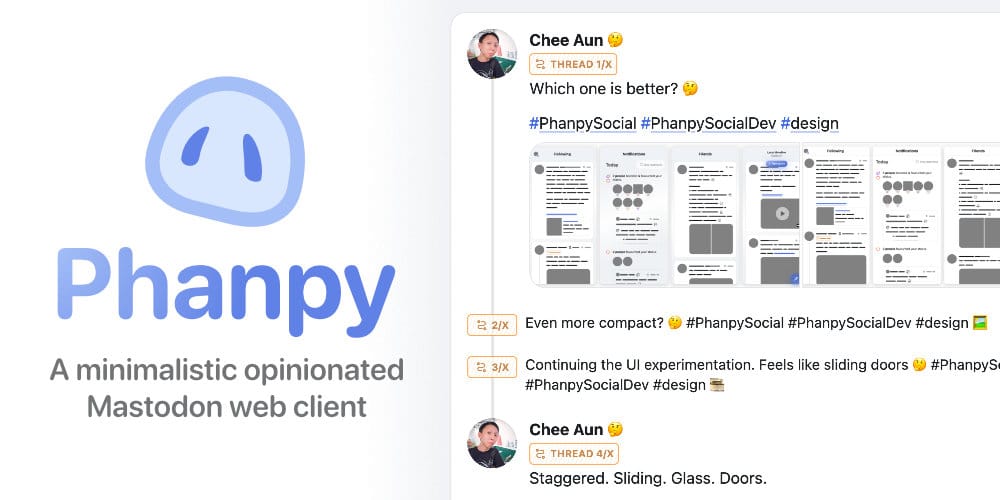

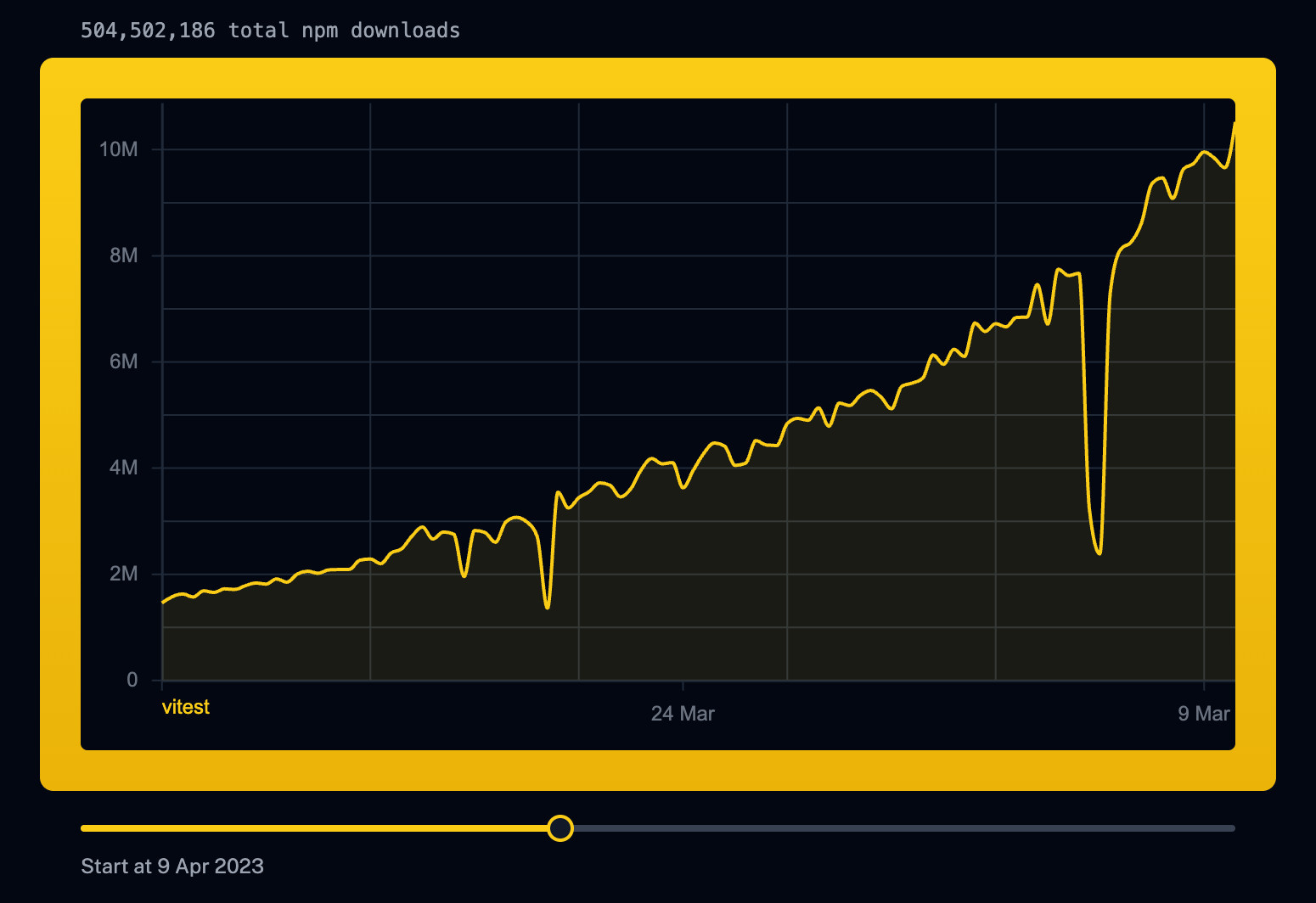
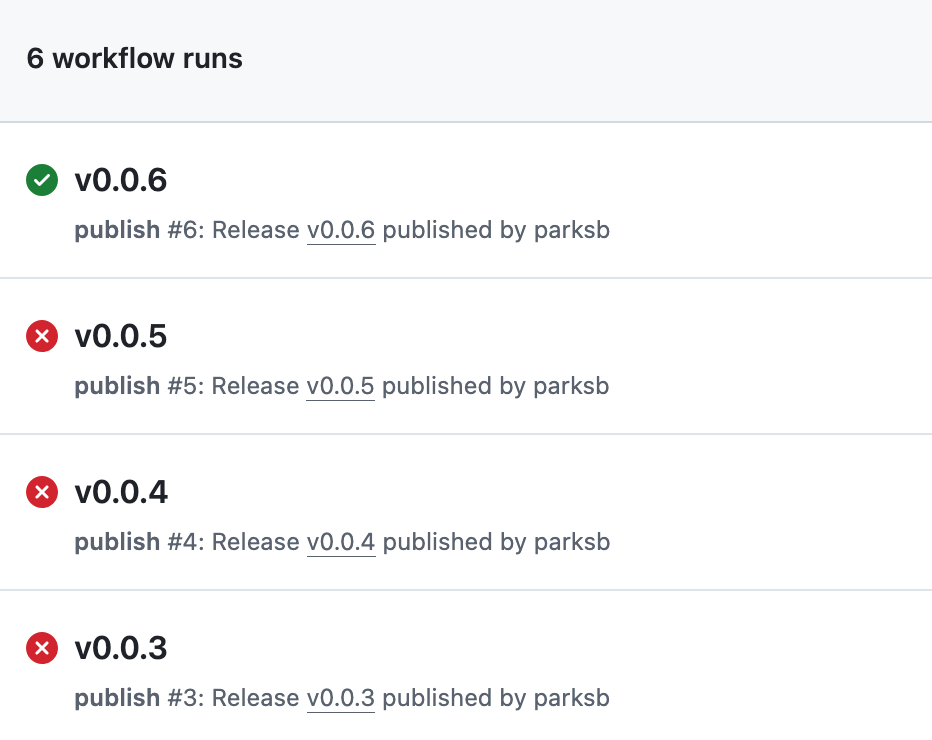

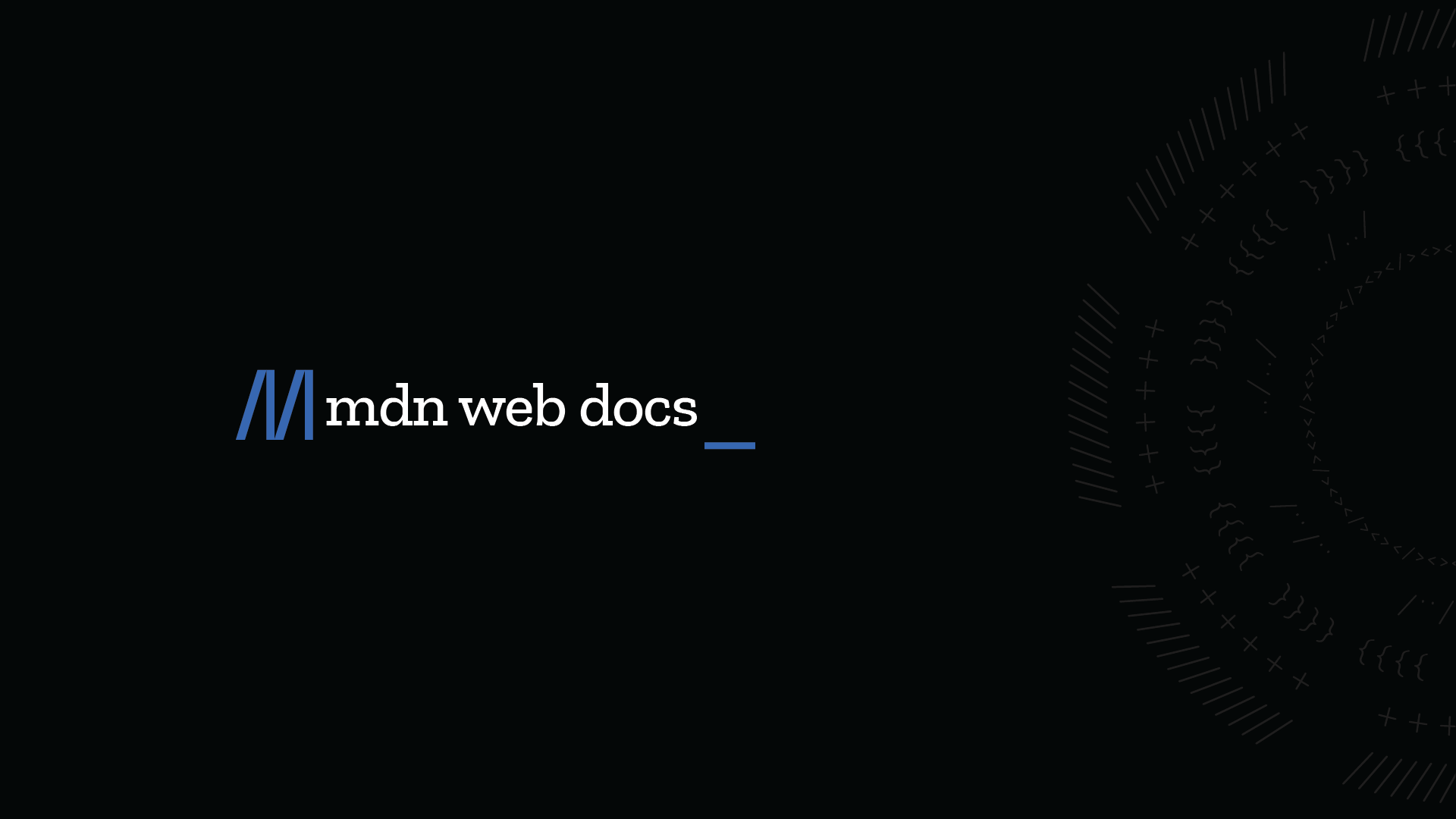


 くろでん
くろでん

